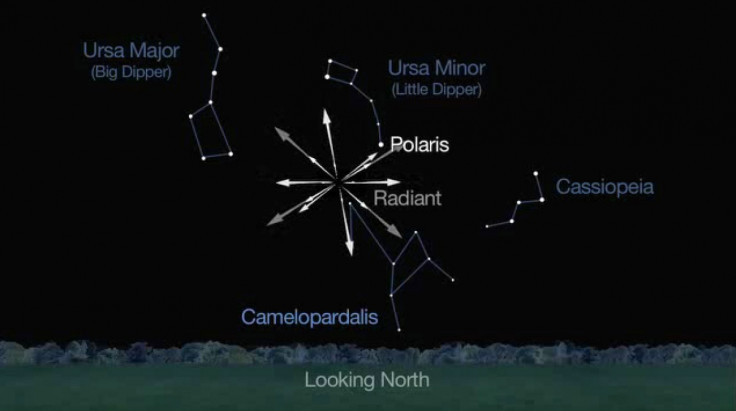Camelopardalid Meteor Shower: Where to Watch Shooting Stars Live Online
The first Camelopardalid meteor shower is set to take place on the night of 23 May, as Earth passes through debris left behind by Comet 209P/LINEAR.
This is the first time our planet has ever encountered the comet's path of rock and ice, since the rare comet was discovered in 2004 by the Lincoln Near-Earth Asteroid Research initiative.
In the US, the peak time to see the shower will be between 2am and 3am EDT, which is around 7am to 8am in the UK. Although the shower will occur after sunrise in the UK, it may still be visible, depending on the brightness of the shooting stars.
Where can you watch the meteor shower online?
If you can't see the meteor storm in person, you can watch it live online with two webcasts from the Slooh Community Telescope and the Virtual Telescope Project.

The Slooh coverage will offer live views of Saturn from a remotely operated telescope in the Canary Islands as the planet reaches opposition, according to Space.com. It will feature commentary from astronomer Bob Berman and Slooh host Geoff Fox.
The Virtual Telescope Project webcast will be hosted by Gianluca Masi, an Italian astronomer.
How do you watch the event?
To witness the shower, Space.com advises that those observing at night find a safe site that offers a "wide-open" view of the sky.
You should arrive early, to allow your eyes to adjust to the dark for 20 minutes - and cover the end of your torch with dark-red cellophane, as dim red light affects your eyes less than lamplight.
The radiant for Comet 209P/LINEAR is in the constellation of Camelopardalis. According to Slate.com, the constellation is very near the north pole of the sky, near Polaris, but the key to spotting shooting stars is to find a a viewing area which is less affected by light pollution.
What will the shower look like?
"The general consensus is that this week's Camelopardalids will be comparable to a very good Perseid meteor shower with an added possibility of a storm. I'm planning to be out watching." Washington Post quoted Geoff Chester, an astronomer at the US Naval Observatory.
Speaking to IBTimes UK, Dr Richard Miles from the British Astronomical Association, said it may still be possible to view the celestial event in the UK. "You might see such meteor showers in the daytime - there is some thought it will be large," he explained.
Dr Miles added that for watchers in the UK, the meteor shower will be pretty unpredictable - it could be "spectacular" or a "damp squib".
© Copyright IBTimes 2025. All rights reserved.






















